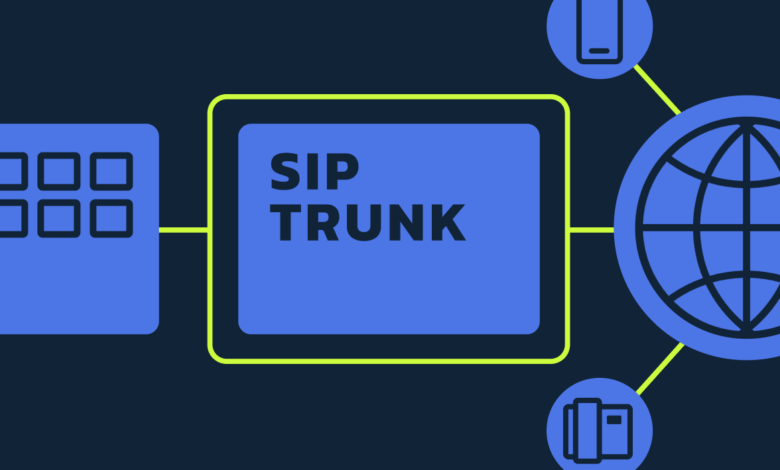The Role Of SIP Trunks In Unified Communication Platforms

SIP trunks are the most important underlying technology for modern Unified Communication (UC) platforms. SIP trunks effectively carry voice, video, messaging, and conferencing over the Internet and make the last in a long line of bridges to pull traditional telephony and cloud communication into an effective and collaborative business environment. This way, SIP trunk is carving its niche into the future of Unified Communication platforms.
What Is Sip Trunking In Unified Communications?
SIP trunking enables voice and multimedia communications to be sent by Companies over IP networks, eliminating the use of traditional phone lines. With the combination of the UC platform, SIP trunks enable voice calls, video conferencing, instant messaging, and file sharing along a desktop application interface. The final goal of this convergence is simplified business communication leading to increased productivity in the workflow.
Seamless Integration And Cost Efficiency
Integrating into an already-existent communication system is one of the opportunities SIP trunks provide for UC platforms. No matter whether the business is on Microsoft Teams, Zoom, Cisco Webex, or any other UCaaS provider, SIP trunks will ensure clean connectivity to Public Switched Telephone Networks (PSTN) and a further diminished dependence on multiple infrastructures for communication cost savings; think several thousands worth of benefits through getting rid of expensive PRI lines and eliminating long distance charges and creating a single communication channel.
SIP trunks don’t only save on costs spent on all these services but also save on hardware as there is no need for explosive capital investments. SIP trunks work through the internet as opposed to old-fashioned telephone systems that used to tie telephone sets to dedicated circuits driving down operational costs; thus, it makes the perfect solution for organizations that want the maximum ROI from their communication infrastructures.
Scalability And Flexibility For Growing Organizations
Unified Communication solutions must be scalable for the growing teams and the changing needs of the business. SIP trunking offers flexibility that allows companies to scale down or up instantly without the hassle of installing physical phone lines. Whenever a company expands with multiple locations or embraces a remote workforce, SIP trunks provide reliable communication that reaches all contact points.
SIP trunks support business continuity by allowing geographic redundancy and failover measures. For instance, calls can be automatically rerouted in case of network redundancy failure or unexpected interruptions.
Improved Call Quality And Reliability
With Quality of Service (QoS) control mechanisms, SIP trunks give high-definition and good voice quality with consequent reliability in the communication experience. Even when local outages occur, business entities maintain uninterrupted communication with one another through redundant data centers and failover mechanisms. This reliability is the most critical for mission-centric operations as well as remote workforces that depend on crystal-clear and consistent communications.
Furthermore, it also provides the business with an advanced call-routing solution. Advance call-routing systems can even route calls to the employee based on availability, geographical location, and customer preference. This ensures that the well-functioning customer service apparatus can see the right department called without an unnecessary wait.
Security and Compliance in Unified Communications
Security is a very important aspect of Unified Communication bridges; SIP trunks ensure that the channels are secure. Their services also include end-to-end encryption multi-factor authentications and fraud deterrence tools which help beef up security against cyber threats. HIPAA, GDPR, and PCI-DSS compliance just promise that the business will work within the laws while protecting the integrity and privacy of data.
Advanced security measures regarding SIP, like firewall integration, SBCs, and intrusion detection systems, further act to prevent unauthorized access to the business’s communications, thereby protecting against potential breaches.
Making the Future Business Communication Bulletproof
Seamless transition and evolving SIP trunks will keep forming a communication future-proofing strategy that the organization does toward the cloud and remote working complete evolution cycle. From enhancing the power of Unified Communications platforms with AI, automation, and advanced analytics, SIP trunks will also afford a greater competitive edge to enterprises in this digital-first world.
Trunking technology also endorses innovations such as speech-to-text transcription, chatbot integrations, and predictive call analytics, allowing for further customer engagement while making corporate communication attractive.
Final Thoughts
As most businesses put in place advanced communication tools, SIP trunking for organizations of the future proves to be an effective key consideration in Unified Communication platforms through cost, scalability, security, and interoperability.
Such investments in SIP trunks ensure future-proof communications infrastructure for organizations and provide savings in costs, while at the same time improving operational efficiency, all while ensuring uninterrupted operability across far-flung locations.






